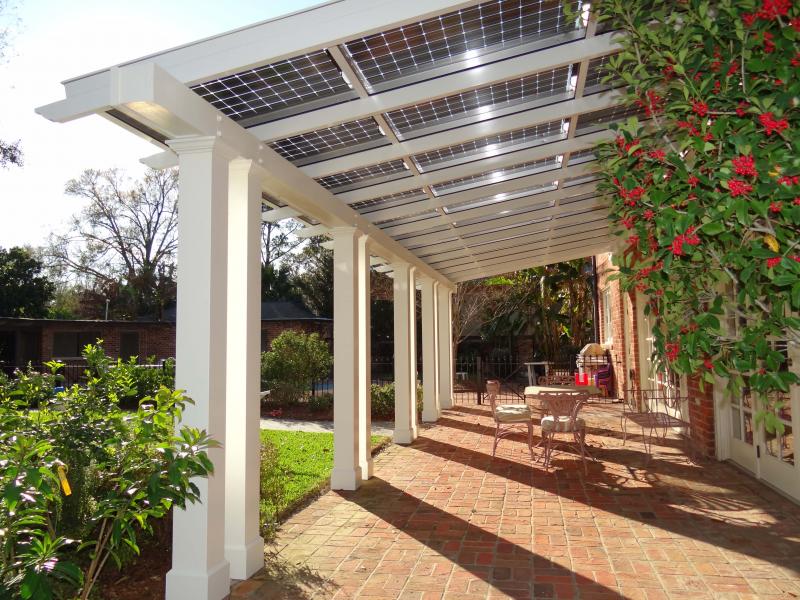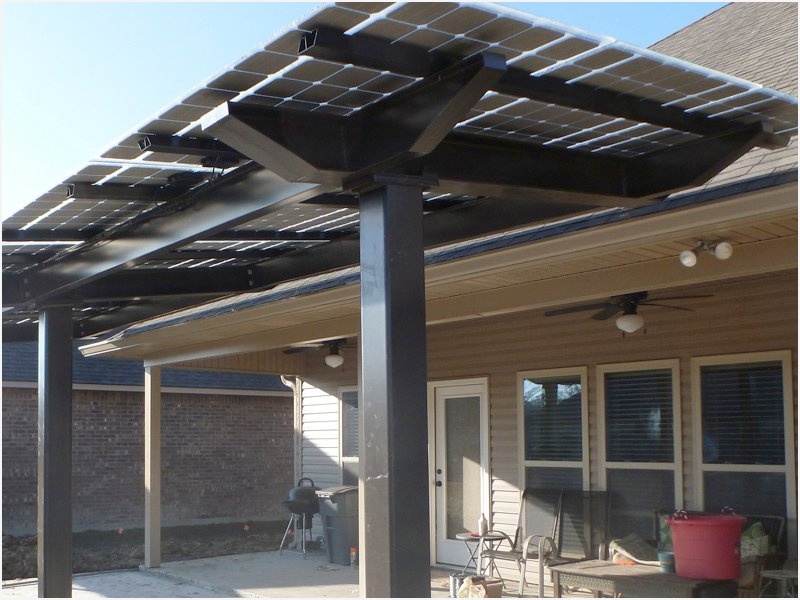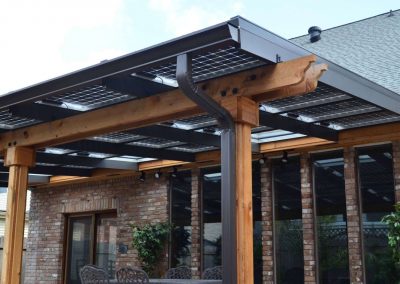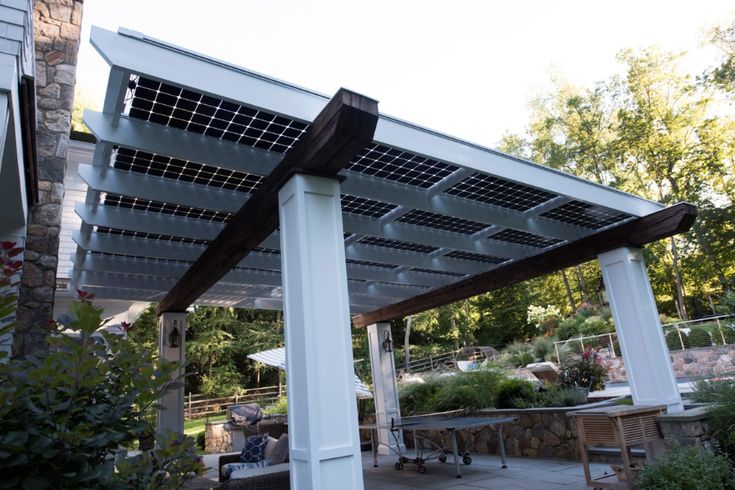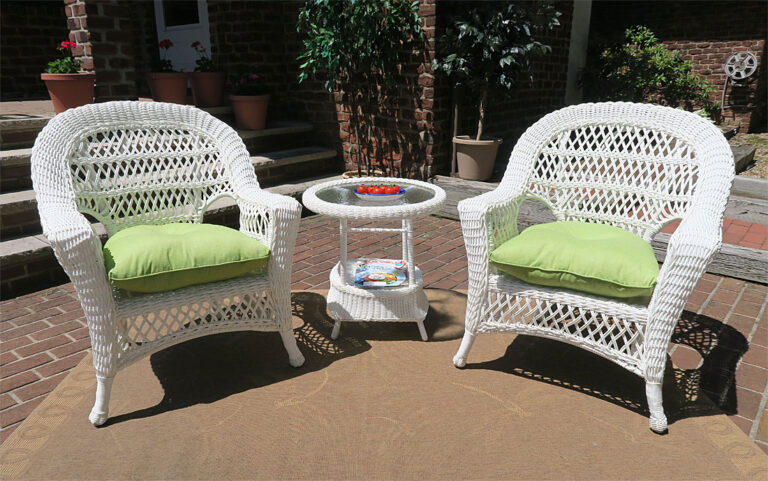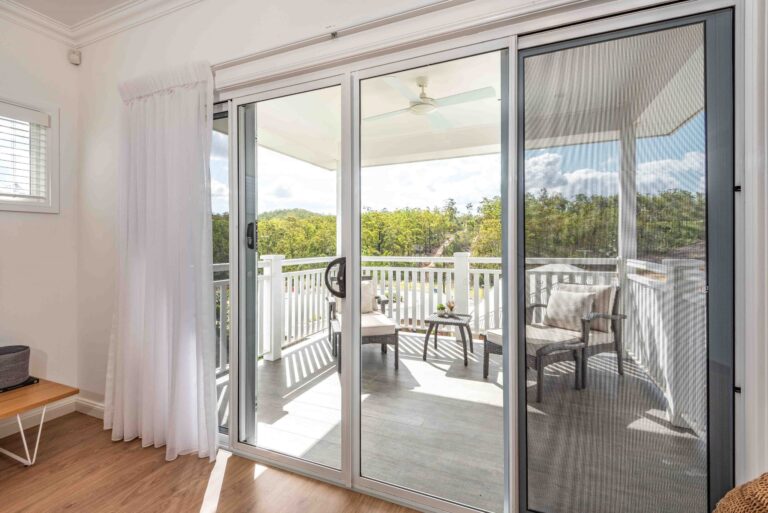Patio Solar Roof – How to Turn Your Patio into a Powerhouse
Did you know that you can generate clean and renewable energy from your patio roof? A solar patio roof is a type of solar system that uses your patio structure as a mounting platform for solar panels instead of your rooftop or ground. It is a smart and stylish way to transform your outdoor space into a green and efficient power source for your home.
In this article, we will show you how to turn your patio into a powerhouse with a solar roof by covering the following aspects: design, installation, cost, and maintenance. You will learn about the different types and styles of solar patio roofs, how to choose the best one for your needs and preferences, how to install and maintain them, how much they cost, and what financing options and incentives are available for them. By the end of this article, you will be ready to take the next step towards creating your own Patio Solar Roof and enjoying its benefits.
What are Patio Solar Roof?

These panels aren’t just any panels; they’re specifically made to match the style of your patio. Patio solar roofs are a creative way to combine the advantages of solar energy with the usefulness of a conventional patio roof. Solar panels installed on these roofs effectively collect sunlight and transform it into electrical energy.
This design provides the residence with clean, renewable energy while providing a shaded outdoor space. It’s a practical method to keep the visual attractiveness of a typical patio while cutting electricity expenses and promoting environmental sustainability. Patio solar roofs are essentially a one-stop shop for energy efficiency and entertainment.
There are a few important considerations to make while looking for a patio solar roof. Consider that you are purchasing a miniature power plant for your house in addition to a roof! Therefore, take into account the following:
Design: Types and Styles of Solar Patio Roofs
There are different types and styles of solar patio roofs that you can choose from, depending on your needs and preferences. Some of the most common ones are:
Pergolas:
A pergola is a freestanding or attached structure that consists of vertical posts and horizontal beams that support a lattice of panels. A solar pergola can be a great option if you want to create a shaded and comfortable area for your patio while also generating electricity from the sun. You can customize the design, size, and shape of your solar pergola to match your patio and home style.
Gazebos:
A gazebo is a roofed structure that is usually octagonal or circular in shape and provides a 360-degree view of the surroundings.
A solar gazebo can be a perfect choice if you want to add a focal point and a cozy spot for your patio while also harnessing the power of the sun. You can select the material, color, and features of your solar gazebo to suit your taste and budget.
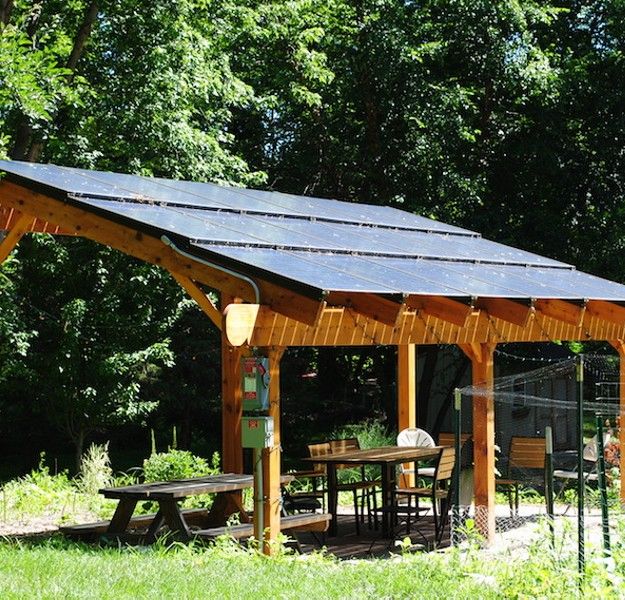
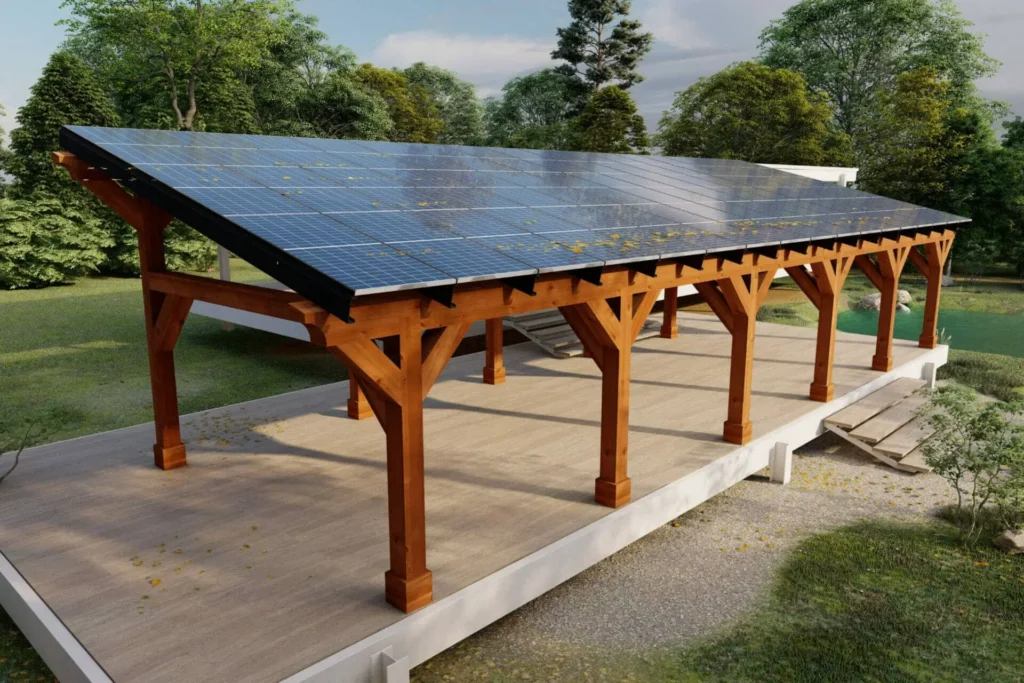
Carports:
A carport is a covered structure that is used to protect vehicles from the elements. A solar carport can be a smart solution if you want to use your patio space as a parking area while also producing clean and renewable energy. You can adjust the height, width, and length of your solar carport to fit your vehicle size and patio space.
Awnings:
An awning is a sheet of fabric or metal that is attached to the wall of a building and extends over a window, door, or patio. A solar awning can be an ideal option if you want to block the sun and rain from your patio while also generating electricity from the sun. You can choose the type, size, and angle of your solar awning to optimize the shade and power output.
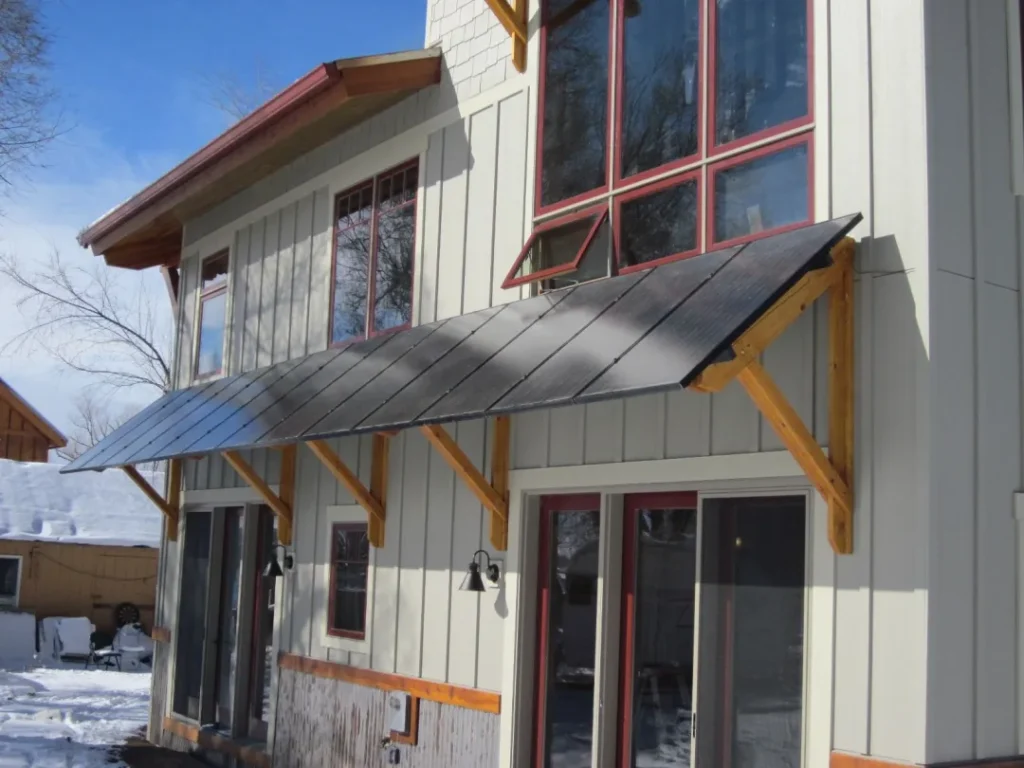
Examples and Images of Solar Patio Roofs
Here are some examples and images of solar patio roofs that suit different patio sizes, shapes, and layouts and how they integrate with the existing structure and landscape of your property:
A solar pergola covers a rectangular patio and complements the brick wall and wooden fence of the house. The panels are arranged in a checkerboard pattern and provide both shade and power for the patio lights and fans. !solar pergola
A solar gazebo that stands on a circular patio and enhances the greenery and flowers of the garden. The panels are mounted on the roof and provide both power and protection for the patio furniture and appliances. !solar gazebo
A solar carport that spans over a narrow patio and matches the color and style of the house. The panels are installed on the roof and provide both power and shelter for the car and the patio grill. !solar carport
A solar awning extends over a wide patio and contrasts with the white wall and blue door of the house. The panels are attached to the awning and provide both power and shade for the patio table and chairs. !solar awning


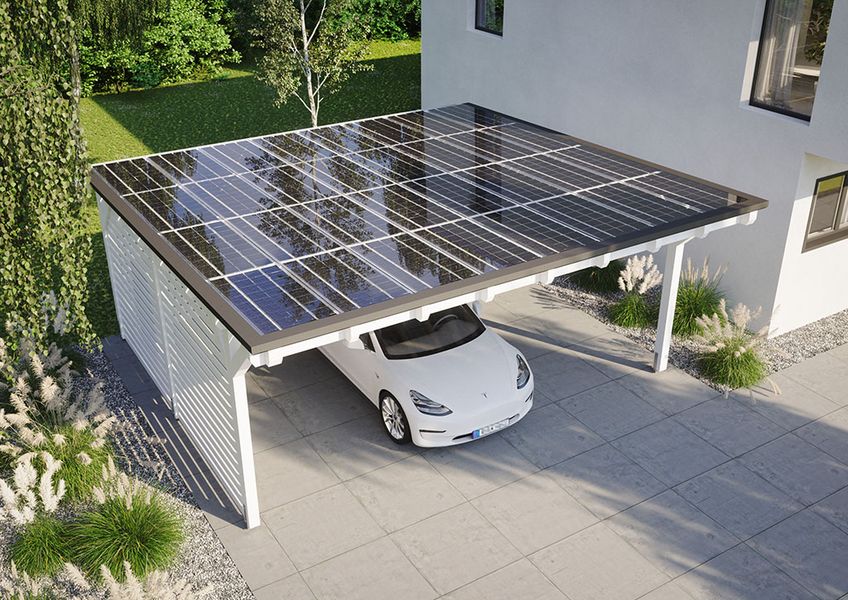

Tips and Advice for Optimizing Your Solar Patio Roof
Here are some tips and advice for optimizing the performance and appearance of your solar patio roof:
- Choose the right orientation, angle, and size of the panels: The orientation, angle, and size of the panels affect how much sunlight they can capture and convert into electricity. Ideally, you want to orient your panels towards the south (or north if you are in the southern hemisphere) and tilt them at an angle that is equal to your latitude. You also want to choose the size of the panels that match your energy needs and patio space.
- Select the best materials and colors for your solar patio roof: The materials and colors of your solar patio roof affect how durable and attractive it is. You want to select materials that are weather-resistant, fire-resistant, and easy to maintain, such as metal, wood, or vinyl. You also want to choose colors that blend well with your home and patio style, such as black, brown, or gray.
- Add some accessories and features to your solar patio roof: You can add some accessories and features to your solar patio roof to make it more functional and appealing, such as lights, fans, outlets, speakers, or sensors. These accessories and features can enhance the comfort and convenience of your patio while also using the electricity generated by your solar patio roof.
Installation Patio Solar Roof
Steps and Process of Installing a Solar Patio Roof
Installing a solar patio roof is not a DIY project, as it involves complex and technical tasks that require expertise and equipment. The steps and process of installing a solar patio roof are as follows:

- Planning and permitting: Before you start the installation, you need to plan and design your solar patio roof and obtain the necessary permits and approvals from your local authorities and utility company. You also need to check the condition and suitability of your patio structure and electrical wiring and make any modifications or upgrades if needed.
- Mounting and wiring: After you have the permits and approvals, you can start mounting and wiring your solar patio roof. This involves attaching the mounting hardware and brackets to your patio structure, securing the panels to the mounting system, and connecting the wires and cables from the panels to the inverter and the breaker box. You also need to install a meter and a switch to monitor and control the flow of electricity between your solar patio roof and the grid or a battery backup.
- Testing and commissioning: Once you have the mounting and wiring done, you need to test and commission your solar patio roof. This involves inspecting and verifying the quality and safety of the installation, performing some tests and measurements to ensure the proper functioning and output of the system, and activating and registering your solar patio roof with your utility company and the relevant authorities.
The installation of a solar patio roof typically takes a few days to a few weeks, depending on the size, type, and complexity of the system and the availability and schedule of the solar contractor.
Importance of Hiring a Qualified and Experienced Solar Contractor
Hiring a qualified and experienced solar contractor is essential for ensuring a safe and professional installation of your solar patio roof. A solar contractor can help you with:
- We will help you choose the best solar patio roof for your needs and preferences and provide you with a customized and detailed quote and proposal.
- Obtaining the necessary permits and approvals, handling the paperwork, and coordination with the local authorities and utility companies.
- Installing and maintaining your solar patio roof and providing you with a warranty and a service contract.
- Troubleshooting and resolving any issues or problems that may arise during or after the installation.

To find and compare the best solar contractors in your area, you can use online platforms and directories, such as SolarReviews, EnergySage, or HomeAdvisor. You can also ask for referrals and recommendations from your friends, family, or neighbors who have installed solar patio roofs.
Common Challenges and Issues During the Installation
Installing a solar patio roof is not a simple or straightforward process, and some challenges and issues may be encountered along the way. Some of the common ones are:
- Dealing with local codes and regulations: Depending on where you live, you may have to comply with various codes and regulations regarding the design, installation, and operation of your solar patio roof. These codes and regulations may vary from state to state, county to county, and even city to city, and they may change over time. You need to be aware of and follow the latest and most relevant codes and regulations for your location and obtain the required permits and approvals before you start the installation.
- Securing the structure and panels: Your solar patio roof needs to be sturdy and stable and able to withstand different weather conditions and environmental factors, such as wind, rain, snow, dust, and debris. You need to ensure that your patio structure is strong and durable enough to support the weight and pressure of the panels and that the panels are securely attached to the mounting system and the structure. You also need to consider the potential impact of your solar patio roof on the drainage and ventilation of your patio and roof and make any adjustments or improvements if needed.
- Connecting the system to the grid or a battery backup: Your solar patio roof needs to be connected to the grid or a battery backup so that you can use the electricity generated by the system and store or sell the excess electricity. You need to ensure that your electrical wiring and equipment are compatible and compliant with the standards and specifications of your solar patio roof and that the connection is safe and reliable. You also need to install a meter and a switch to monitor and control the flow of electricity between your solar patio roof and the grid or a battery backup to prevent any power surges or outages.
Cost

Estimate of How Much a Solar Patio Roof Costs
The cost of a solar patio roof depends on various factors, such as the size, type, and quality of the system and the location and condition of your property. However, a general estimate of how much a solar patio roof costs is as follows:
- The average cost of a solar patio roof is about $15,000 for a 5 kW system, which can produce about 7,000 kWh of electricity per year, enough to power an average American home.
- The cost per watt of a solar patio roof is about $3, which is lower than the cost per watt of a rooftop solar system, which is about $3.50.
- The payback period of a solar patio roof is about ten years, which is similar to the payback period of a rooftop solar system.
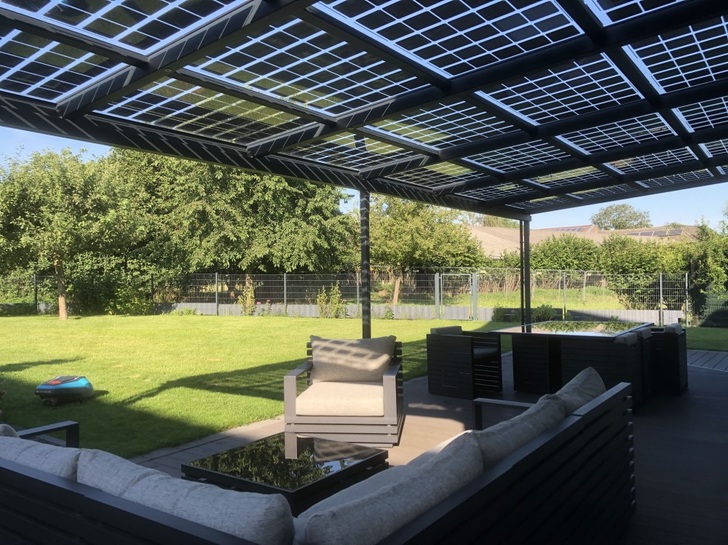
These are approximate figures, and they may vary depending on your specific situation and preferences. To get a more accurate and personalized estimate of how much a solar patio roof costs for your home, you can use online calculators and tools, such as Solar-Estimate, Solar.com, or Google Project Sunroof.
Breakdown of the Different Components and Factors That Affect the Cost
The cost of a solar patio roof is composed of different components and factors, such as:
- The panels: The panels are the most expensive and important part of your solar patio roof, as they are responsible for converting sunlight into electricity. The cost of the panels depends on the type, size, and efficiency of the panels and the number of panels you need for your system. The most common types of panels are monocrystalline, polycrystalline, and thin-film, and they have different advantages and disadvantages in terms of cost, performance, and appearance. The average cost of the panels is about $1.50 per watt.
- The inverter: The inverter is the device that converts the direct current (DC) electricity produced by the panels into alternating current (AC) electricity that your home appliances and devices can use. The cost of the inverter depends on the type, size, and quality of the inverter, as well as its compatibility and integration with your system. The most common types of inverters are string, micro, and power optimizers, and they have different pros and cons in terms of cost, efficiency, and reliability. The average cost of the inverter is about $0.50 per watt.
- The mounting hardware: The mounting hardware is the equipment that attaches the panels to your patio structure and provides support and stability for your system. The cost of the mounting hardware depends on the type, size, and quality of the hardware and the complexity and difficulty of the installation. The most common types of mounting hardware are fixed, adjustable, and tracking, and they have different benefits and drawbacks in terms of cost, output, and maintenance. The average cost of the mounting hardware is about $0.25 per watt.
- The labor: The labor is the fee that you pay to the solar contractor for installing and maintaining your solar patio roof. The cost of the labor depends on the experience and reputation of the contractor, the size and type of your system, and the location and condition of your property. The average cost of the labor is about $0.75 per watt.
- The permits and taxes: The permits and taxes are the fees that you pay to the local authorities and the government for obtaining the necessary permits and approvals and for complying with the relevant codes and regulations. The cost of the permits and taxes depends on the state, county, and city where you live and the size and type of your system. The average cost of the permits and taxes is about $0.50 per watt.
Final Analysis
A solar patio roof is a smart and stylish way to transform your patio into a powerhouse that generates clean and renewable energy for your home. You can choose from different types and styles of solar patio roofs, such as pergolas, gazebos, carports, and awnings, and customize them to suit your needs and preferences.
You can also hire a qualified and experienced solar contractor to install and maintain your solar patio roof and take advantage of the various financing options and incentives available for solar patio roofs. By installing a solar patio roof, you can enjoy the benefits of lower electricity bills, reduced carbon footprint, enhanced outdoor comfort and functionality, and increased home value.
